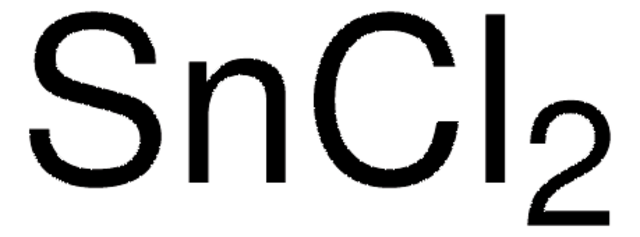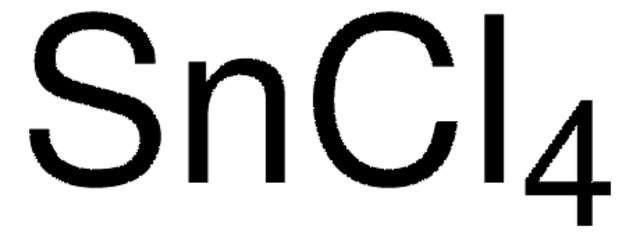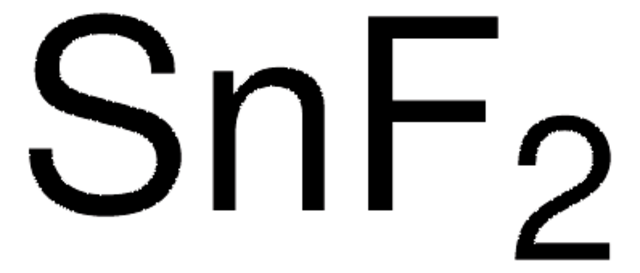452335
Tin(II) chloride
anhydrous, powder, ≥99.99% trace metals basis
Synonym(s):
Stannous chloride
About This Item
Recommended Products
grade
anhydrous
Quality Level
vapor pressure
33 hPa (~429 °C)
assay
≥99.99% trace metals basis
form
powder
reaction suitability
reagent type: catalyst
core: tin
pH
2.18 (20 °C)
bp
606 °C
652 °C (lit.)
mp
246 °C (lit.)
solubility
water: soluble 1780 g/L at 10 °C
SMILES string
Cl[SnH2]Cl
InChI
1S/2ClH.Sn/h2*1H;/q;;+2/p-2
InChI key
AXZWODMDQAVCJE-UHFFFAOYSA-L
Looking for similar products? Visit Product Comparison Guide
General description
Application
accessory
signalword
Danger
Hazard Classifications
Acute Tox. 4 Inhalation - Acute Tox. 4 Oral - Aquatic Chronic 3 - Eye Dam. 1 - Met. Corr. 1 - Skin Corr. 1B - Skin Sens. 1 - STOT RE 2 Oral - STOT SE 3
target_organs
Cardio-vascular system, Respiratory system
Storage Class
8B - Non-combustible corrosive hazardous materials
wgk_germany
WGK 3
flash_point_f
Not applicable
flash_point_c
Not applicable
ppe
Eyeshields, Faceshields, Gloves, type P3 (EN 143) respirator cartridges
Choose from one of the most recent versions:
Already Own This Product?
Find documentation for the products that you have recently purchased in the Document Library.
Customers Also Viewed
Articles
Silylethyne-Substituted Pentacenes
Our team of scientists has experience in all areas of research including Life Science, Material Science, Chemical Synthesis, Chromatography, Analytical and many others.
Contact Technical Service







